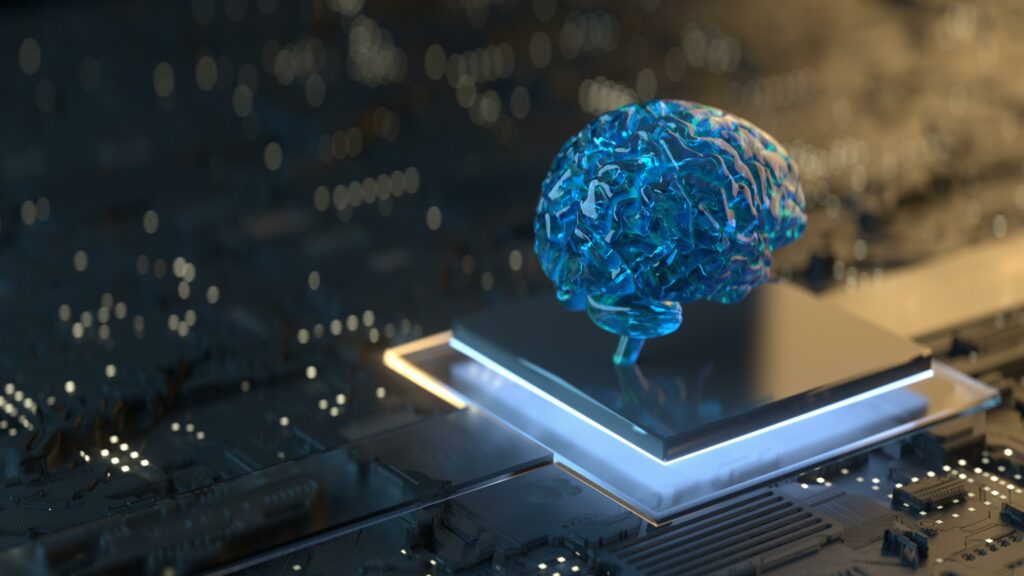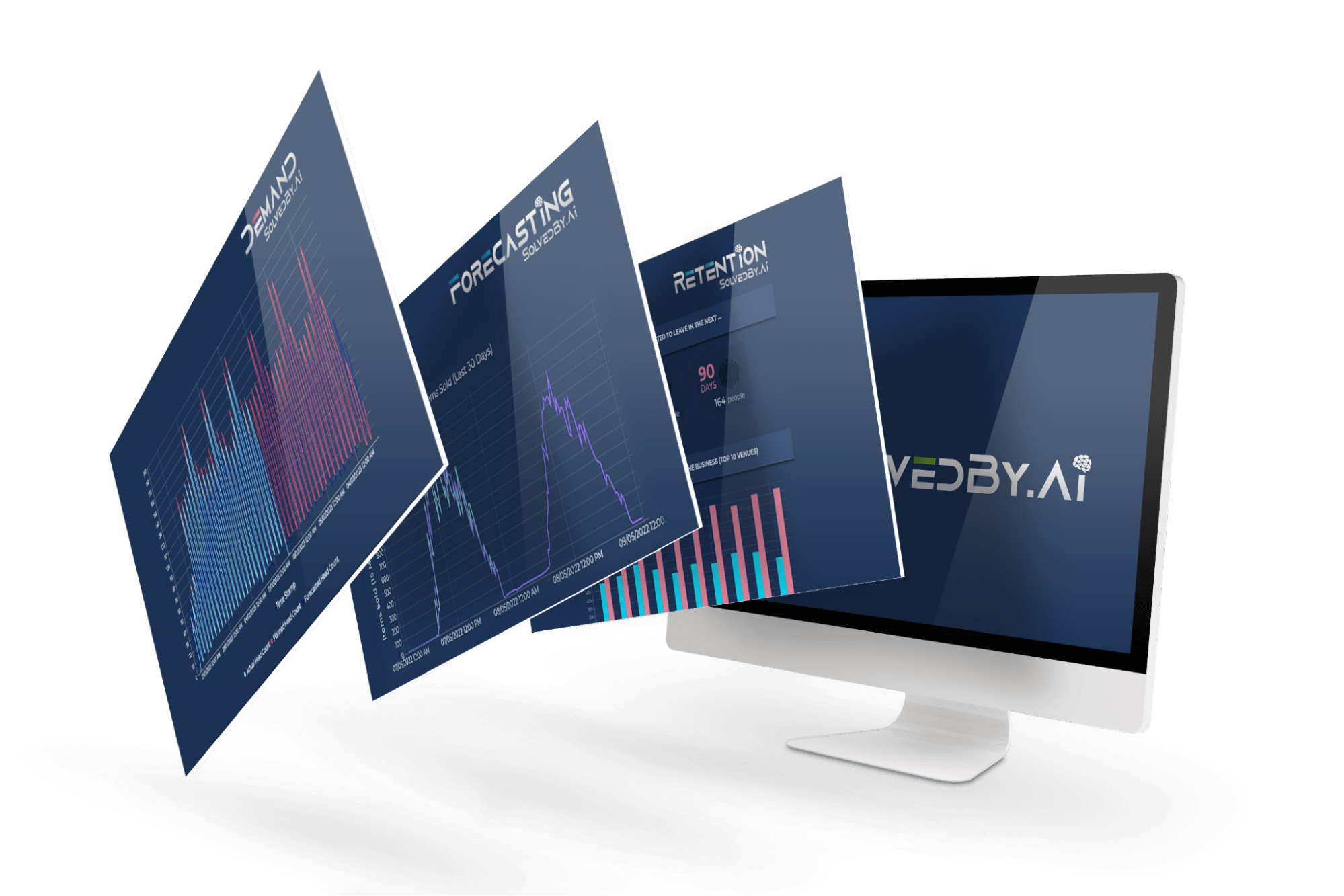Delving into the realm of Artificial Intelligence (AI) can be overwhelming due to its technical nature and specialised terminology. We’ve created a comprehensive guide explaining vital AI and Machine Learning terms to simplify your journey. Our dedicated PhD and MSc data scientists collaborated to ensure accuracy and clarity. This blog post, written by a member of our product team, aims to answer common customer questions and provide a solid starting point. Let us be your trusted resource as you begin your AI exploration.
What is Artificial Intelligence or AI?
Artificial Intelligence is the creation of computer systems capable of performing tasks that would otherwise require human intelligence. These include decision-making, image recognition, planning problems, translation and others.
What is the difference between AI and Machine Learning?
ML and AI are similar technologies and are often used as synonyms for each other. So what is the difference between Ai and Machine Learning? In particular, machine learning is often described as AI, especially by marketing departments. We could go into more detail and discuss terms like Robotics Process Automation. However, we shall keep to the basics for now.
So we asked our data science team to describe them, and this is what they said:
- Artificial intelligence: the higher concept – aimed at creating intelligent machines that can equal human reasoning and decision-making.
- Machine learning: A subset of AI where computers learn from patterns in data without being explicitly programmed to exploit those patterns.
What is an algorithm?
According to Wikipedia, “In mathematics and computer science, an algorithm is a finite sequence of rigorous instructions, typically used to solve a class of specific problems or to perform a computation. Algorithms are used as specifications for performing calculations and data processing.”
Therefore, A single algorithm comprises three basic building blocks: sequencing, selection, and iteration.

What are the stages of Artificial Intelligence?
Artificial Intelligence has three stages or levels. In reverse order of intelligence, they are
- Artificial Narrow Intelligence: Sometimes called Weak AI or just Narrow AI, these AIs can perform only a narrowly defined set of specific tasks. A Narrow AI does not possess any ability to think. It simply performs a set of pre-programmed tasks. Examples include Alexa, ChatGPT, Google Translate etc. Almost all of the AI-based systems available today are Narrow AIs, including all of the products Solvedby.ai has built. Often multiple narrow AIs are made to achieve an outcome. For instance, rather than having a single forecasting Ai to predict sales and then schedules the correct staff member for every shift in a week, multiple narrow AIs are needed to deliver the end result, and the output of one AI is often one of the inputs for another.
- Artificial General Intelligence: Sometimes called Strong AI, this next stage is far more advanced than a narrow AI wherein machines will possess the ability to think and make decisions to the same ability as a human. No examples of Strong AI currently exist, although companies like Google DeepMind have their mission statement as creating Artificial Central Intelligence.
- Artificial Super Intelligence: Artificial Super Intelligence is the most advanced stage of Artificial Intelligence. When AI surpasses human beings’ intelligence, again, No examples of Artificial Super Intelligence currently exist.
What are the different types of AI?
This is a computer science question and is only sometimes necessary to understand if you are researching AI for your organisation. However, we have included a (very) brief description of each of the four types of AI and what distinguishes each. The first two are used in narrow Ais, and the last two are, at present, only theoretical.
A computer scientist will tell you there are four types of AI based on how an AI “reasons”. These are:
- Reactive Machines AI: can only take into account present data and can’t evaluate future outcomes. They are used to perform a narrow set of predefined tasks.
- Limited Memory AI: can make informed and improved decisions by studying historical data. It can make future predictions and is again used for narrow AIs.
- Theory Of Mind AI: In psychology, the “Theory of Mind” says that people have thoughts, feelings and emotions, and this affects their behaviour. In a Theory of Mind, AI will have thoughts and feelings. Such an AI does not yet exist.
- Self-aware AI: Ais that have their own consciousness and are self-aware. Such an AI does not yet exist.
What are the different types of Machine Learning?
Machine learning is about extracting knowledge from the data. It can be divided into three types depending on the way the data is structured.

Like the three stages in AI we just discussed above, these are in reverse order of intelligence. Although, unlike the last two stages of AI and the aforementioned two types of AI mentioned above, all three types of machine learning are in existence and used by our team at Solvedby.ai to produce comprehensive Ai Solutions. They are:
- Supervised learning: is a subcategory of machine learning where the data has to be labelled or tagged before an algorithm can be trained to classify data or predict outcomes accurately.
- Reinforcement learning: allows an AI-driven system to learn through trial and error using feedback from its actions, typically using a scoring system “rewards” the AI when it produces a good outcome.
- Unsupervised learning: this is a type of algorithm that learns patterns from untagged data. The algorithm builds a concise model of its world and then generates outputs such as predictions or plans from this model.
What types of problems can machine learning solve?
You will often hear data scientists discuss problem types. When asked to build an AI or machine learning algorithm, they will want to know what kind of problem they are trying to solve. For instance, if you asked them to scan through many emails and classify them as either Spam or not, then they would call that a classification problem and select from a range of classification algorithms. The three types of issues are:
- Classification problems: Classification is a supervised machine learning method where the model tries to predict the correct label of a given input data, i.e. is an email spam? In classification, the model is trained using training data; then, it is evaluated against test data. It is then used to perform predictions on new unseen data.
- Regression problems: In a regression problem, the machine learning algorithm can make predictions about the data using a graph which plots the variables that best fit the given data points. Regression problems are mainly predictions, time series forecasting, and determining the cause-and-effect relationship between different data sets.
- Clustering problems: Clustering is the task of dividing data points into a number of groups so that the data points in each group are similar to other data points in that group and dissimilar to the data points in other groups. Clustering problems are solved using unsupervised machine learning. As an example, clustering is used in marketing for grouping different customer types by their behaviour.
So what is the difference between structured and unstructured data?
Structured data: Stored in a predefined format, such as a table where the data is already labelled as a result of the column and row that it is stored in.
Unstructured data: A collection of varied data that are stored in native formats such as video files, images or audio clips. The file often does not include any (or enough) metadata so that an AI can be trained, and the unstructured data needs to be labelled before it can be of use to a data scientist.
What is data labelling or tagging in machine learning?
In machine learning, data labelling is the process of identifying raw, often unstructured data such as images, audio clips and videos. A tag or label is added so that a machine-learning model can learn from it. An excellent example of tagging is the Captcha test you often have to do when logging into a website. When you click three images that contain traffic lights, you create a label on those three images. This can be used to train a self-driving car how to recognise traffic lights.
Does it matter if a solution uses Artificial Intelligence or Machine Learning?
Most marketing companies (including ours) describe every product as Artificial Intelligence – it sells better and saves, complicating the sales pitch with multiple terms. However, more savvy buyers will often ask if something is true AI or Machine Learning. In practice, it doesn’t matter as long as the tool or algorithm achieves the desired results. Often the results are created by a combination of algorithms, some of which may be true narrow AIs, some may have been created using machine learning, and others may be straightforward algorithms because nothing more complex is required to achieve the task.
Related content:










